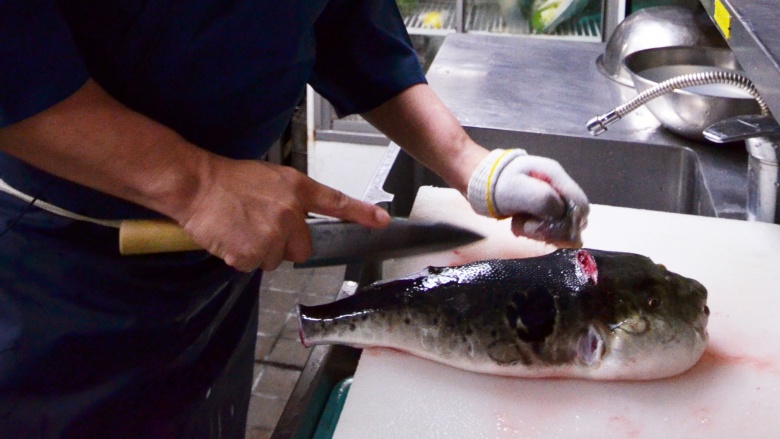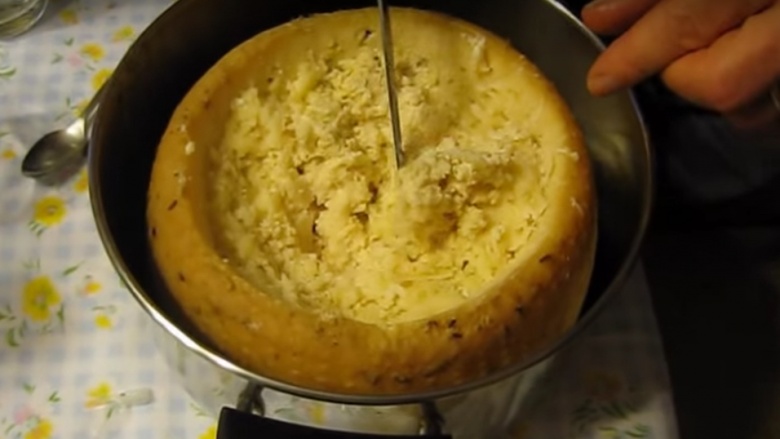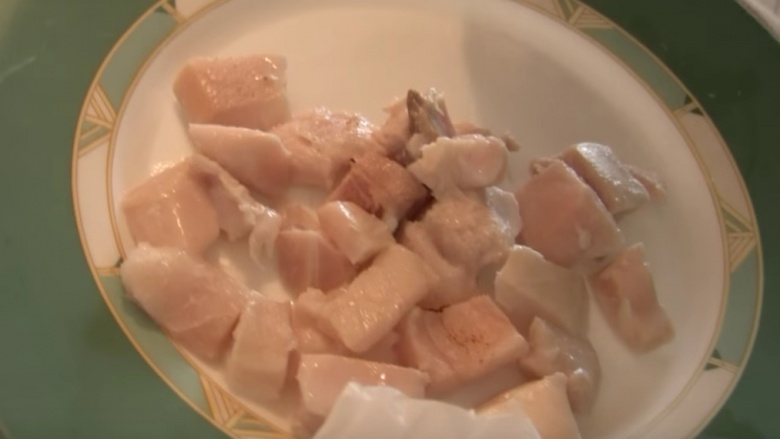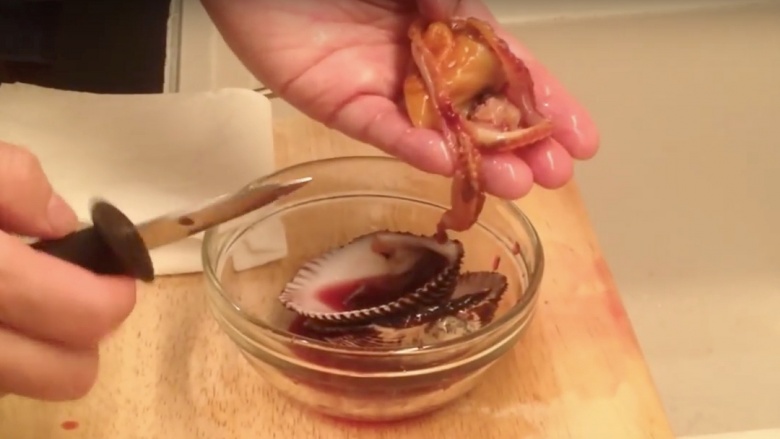Strange Foods With A Great Chance Of Murdering You
As a general rule, food is something animals eat to continue living: it provides the necessary calories and nutrients an organism needs to grow and go about their daily business. Another general rule of dinner is that it be relatively risk-free, and require as little effort to consume as possible—playing Russian roulette with food is a bad long-term survival strategy, and burning more calories in the "hunt" than the food actually contains makes the subsequent meal almost pointless. We humans, however, rarely see a rule we don't want to break, and so we go to great lengths to eat dishes that, without great care and often ridiculous effort, would kill us. Sometimes, they do anyway. Here are a few so-called delicacies that should be approached with care, and probably a bit of alcohol too.
Sannakji
Like something out of a Klingon banquet, Sannakji is a dish that should be approached with a degree of drunken bravado, but probably limited expectations. After all, according to reports, this dish is more of a rite of passage than a must-have tasty treat. And how could it be otherwise when you're talking about trying to chew the writhing leg of an uncooked, living, extremely conscious baby octopus—and chew you must, thoroughly. If you don't, and if the octo-part has any life left in it once you swallow, it could use its suckers to attach itself to your throat on the way down and you'll choke. Several people wind up choking on death on wriggling octopus each year—try not to be one of them.
Fugu
This may be the most well-known of the deadly delicacies, famously almost "killing" Homer Simpson of all "people." Fugu is the name of both the dish and the fish it is made from, which is a kind of cute pufferfish. Parts of the fish, such as its organs and eyes, contain the poison tetrodotoxin which, if consumed, will cause muscle paralysis and asphyxiation. In Japan, years of training are required before a chef is legally allowed to prepare Fugu, but the focus of that training is not how to remove the toxic parts, but how to get the right proportion. If cur correctly, the remaining toxins in the dish should cause mild intoxication and tingling sensations. Fugu poisoning kills up to six people a year in Japan, but most of those are people who caught and prepared the fish themselves. This means that the preparation of Fugu—like motorcycle stunt riding and appendectomies—is something that should really be left to the professionals.
Casu Marzu
Casu Marzu starts out life as a simple cheese made from sheep's milk, which is then allowed to ferment in the open air. But if this was all there was to it, it wouldn't make it onto this list. But alas. Unfortunately, while the cheese is chilling outside, enjoying the air, it is also exposed to the "cheese fly," which lays its eggs right in there—soon enough, the cheese is alive with swarms of maggots. It is important to note that the cheese must be consumed while the maggots are alive, because if the maggots are allowed to die, the cheese becomes unsafe to eat. There are methods by which the worms can be encouraged to leave the cheese prior to eating, but it's honestly hard to see how a piece of rotten cheese surrounded by dead maggots is any more appetizing than a piece containing live ones.
How this cheese became a delicacy is a mystery, because by most standards this shouldn't even qualify as food. Come across this in your fridge, and you would be forgiven for hiring someone with thick rubber gloves to remove it and burn it, the fridge, and your entire house. Its only real qualifications for being called a delicacy are the elaborate "preparation" process, the relative scarcity of the finished product, and the shocking number of people willing to eat it on a regular basis.
Hákarl
If something is dangerous to eat without prolonged periods of elaborate processing, then that might be what's called a hint, especially if the finished product smells like it was soaked in bathroom cleaner. Hákarl is a delicacy in Iceland, traditionally made by gutting and beheading a Greenland shark, burying it in sand and under heavy rocks for six to eight weeks, and allowing it to ferment and lose moisture. Once removed from the sand, it is cut into strips and dried for several more months, before being scraped and cut into ammonia-flavored lumps for consumption. Most reports of eating Hákarl will probably include descriptions of gagging and vomiting, smells of rotting flesh, and extreme blue cheese flavors.
The reason for the elaborate processing is that the flesh of the Greenland shark contains high concentrations of urea and trimethylamine oxide which, when consumed, turns into trimethylamine, and creates the effect of extreme intoxication—but if the descriptions of consuming fully processed Hákarl are accurate, doesn't extreme intoxication actually sound better?
Blood Clams
Blood clams are named for a red, blood-like liquid found in the flesh, and it is considered a delicacy across Asia and the Pacific. Unfortunately the association with blood goes beyond the liquid, and into much more disturbing territories. Blood clams like to grow in shallow water and tidal areas, and feed by filtering large quantities of water through their bodies. Unfortunately, if there are any contaminants in the water they live in, those contaminants will get concentrated in the clam, and carried into whatever eats it. Wild clams living in clean water are more likely to be safe, but because of the profits that can be made, clams are sometimes gathered or farmed in polluted water. Even clean water doesn't make them safe: gastroenteritis is a common result of eating bad clams, but there is also a good chance of contracting Hepatitis A ... among other things.
Blood clams have been banned in Shanghai since a hepatitis outbreak in 1988, although they are still consumed on the down low. In 1982, 40 people in New York contracted Hep A, but those numbers were probably underreported due to the way the disease develops. Eating blood clams wouldn't be so dangerous if they were cooked properly, but they are often consumed either raw, or after a very quick boiling session that isn't enough to render them safe. So if the idea of a slimy lump of bloody-looking salty flesh sliding down your throat isn't enough to give you the cold sweats, eating it probably will.





